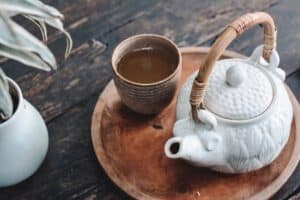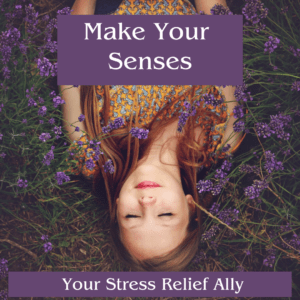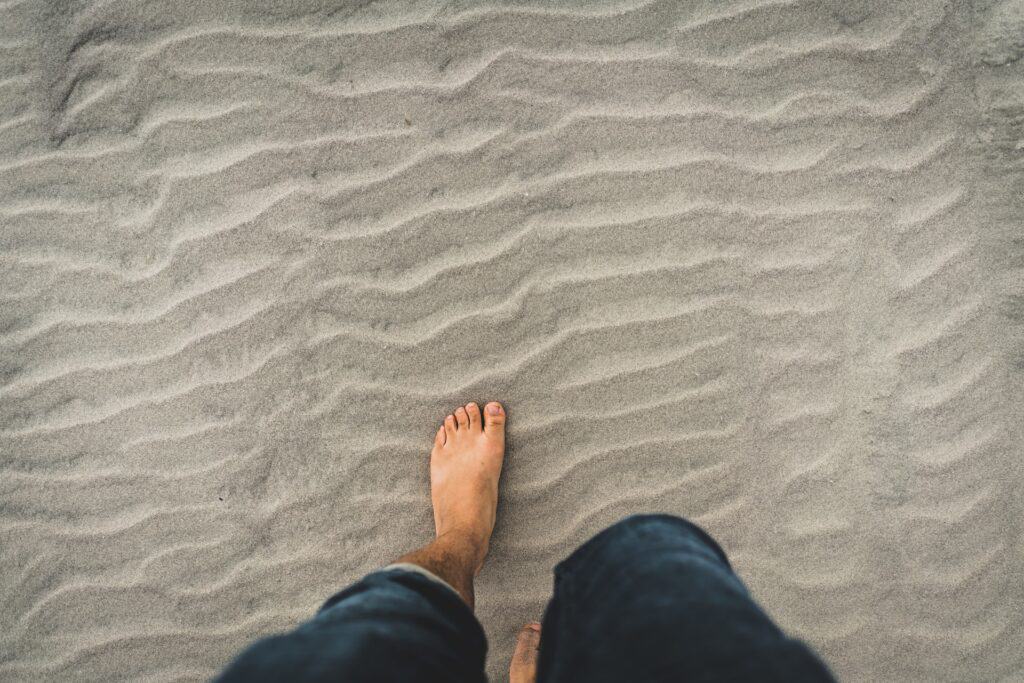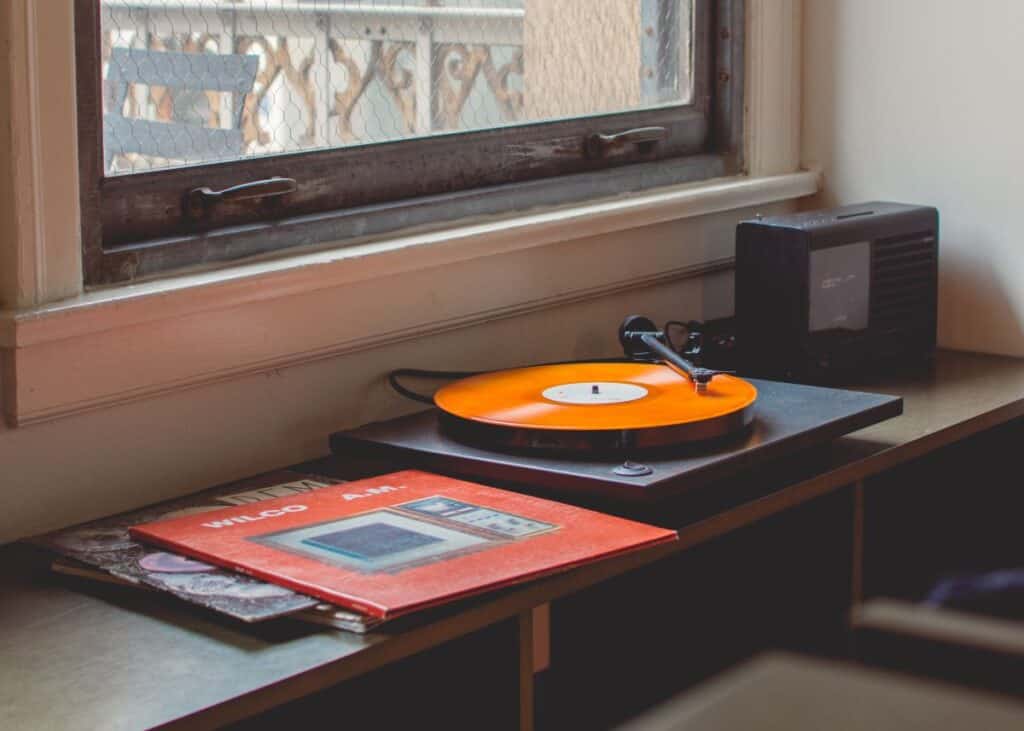
Learning how to live in the present moment is not as easy as it sounds.
Lucky for us, present-moment awareness is a skill you can develop. With sufficient development of awareness skills, you’ll be on a path to contentment or greater inner peace.
Each person’s journey is different, so be kind to yourself! Learning how to develop present-moment awareness is about the journey. Unlike other areas of your life, no amount of goal-setting will get you there.

What is presence?
Even the experts have a difficult time defining “presence”. Some say that the state of presence is when you experience a lack of interpretation or judgment. (Childs, 2007). If you think about it, we spend a lot of time each day judging others or interpreting people’s actions.
Others describe presence as a state of “present-centered attention or awareness” (Brown & Ryan, 2004).
You’ve heard terms like consciousness, being, and mindfulness? All of these are similar or the same as presence.
Regardless of the terms you use, when you talk about “being present” you’re usually thinking about a peaceful feeling where you’re not thinking about the past or the future. You’re aware.
Understanding for yourself what awareness is, and also being able to recognize its opposite—what might be called confusion, illusion, or even fogginess—are good places to start.
To better understand what awareness is, let’s look at some examples.

What is Awareness?
A simple definition of awareness is “noticing”. Think about these two examples:
- You might be aware, for example, that you’re anxious yet you might not be aware of what makes you anxious.
- Or you might be aware that you find it extremely difficult to be around a particular person, but you might not be aware of the thoughts that make you feel that way.
As you can see from these two examples, there are levels of awareness. You all already have some level of awareness. The goal is to become increasingly more aware. And as you do, you’ll gain more and more benefits.
Why presence?
Mindfulness practices and meditation have become a huge industry for a reason.
Well, many reasons.
If I asked you to share the reasons why you’re reading Small Steps, Big Joy, you might say you’re looking for stress relief. Or maybe you want to slow down and enjoy life more.
If you’re like me, you are all too familiar with anxiety and you are ready for change.
For the past 15 years I’ve worked in fast-paced office environments. It was easy to get caught up in the flow of external demands.
Now that I have time to step back and reflect, I remember feeling exhausted when I came home each evening. The tension between what I had to do and what I wanted was overwhelming at times. I now know that this is partly due to something called “resistance”, which I’ll write about in another post.
Even my hobbies started to create internal stress, because I felt guilty for buying materials if I wasn’t using them regularly.
Thankfully, after breaking free from a career that was no longer inspiring (that also caused stress-related health issues), I see now how uncentered I was. I started to question my life choices and felt like everyone else was enjoying their lives except for me.
I’m sure you have your own story of how you arrived here at this moment. My answer to “why is presence good for you?” is: presence is about experiencing “now” through your senses, minus the labels or judgment.
Certain external situations are out of your control. Within your control? Your experience of the present moment.

Basic Practices to get started
Everywhere you look, you’ll see people talking about the benefits of meditation for stress, anxiety, and other conditions. You’ll see a list of CEOs and famous people who practice sitting meditation for 30 minutes a day.
Although meditation is a useful tool, meditation can be challenging, especially if we’re not ready for it (Lindahl et al., 2017). It just isn’t practical or beneficial when you are already struggling with racing thoughts.
A more practical way to find awareness is through brief intentional moments of awareness throughout the day (Tolle, 2004). One way to begin is to pull your attention away from whatever you’re doing—working, walking, talking, etc..…—and take just a moment to notice the being of your surroundings.
Try this:
You might have a picture on your wall or a pen on your desk. Take just one minute or less to see if you can notice new things—things you hadn’t noticed before—about that one object.
Or, if you’re out and about, take just one minute—or even 30 seconds—to notice the shapes and colors on a street sign, a noise in the background, or the feeling of the sun on your shoulders.
It’s perfectly natural for thoughts to come in and interrupt your practice (at least at first). To be sure, at first, your moments of awareness may only last a second or even less. This is fine.
You might notice the thoughts running by and see if you can start to find spaces between the thoughts. When you do, try putting your attention on the spaces, even for a moment.

Exercises
Exercise 1: Pause to notice
- Take a moment now to close your eyes. See if you can calm down your thoughts. Center yourself in your body. Find a space where you feel a bit more comfortable being in your own skin. Now open your eyes. Take a moment to notice some of the objects around your room.
- First, let’s notice your computer or smartphone screen. See if you can identify the details of the screen. How sharp are the corners? What colors is it? How bright is the light shining? What is its size and shape? And see if you can just notice it as a united thing.
- Now, see if you can find a new object. Perhaps a pen or the table in front of you. The carpet on the floor or the clothes on your back. And just try to fully sense them. What do they look like? What is the object’s shape? Position? Colors? Or other details?
Does the object have a smell? What does the object feel like when you touch it? Just see if you can sense the aliveness of the object as you bring increasing levels of awareness to it. - Now let’s look for one more object to give our full attention to. Do you have a pad of sticky notes, a drink or food item near you, a stapler or paper clip, or push pin? Choose another object to give your full attention to as we finish up this exercise.
What does this object look like? Use your awareness to pinpoint everything you can about this object. Make sure you look at it but also try to use some of your other senses like smell taste or touch or even sound to get to better know this object that has been here with you. - Now just take a moment to see how that felt in your body. How do you feel now? See if you can take this feeling of presence with you as you go back to whatever it is that you were doing.
Exercise 2: Use Your 5 senses
Building on the previous practice, you can increase the depth of your awareness by bringing in all of your senses: seeing, hearing, feeling, smelling, and tasting.
- Throughout the day, pause to let each of your senses notice things.
- Look at all the details of a tree or a plant outside your window.
- Listen for the sounds of the wind, kids playing, or cars driving.
- See if you can feel the sensation of your shirt on your back or your lips pressing together.
- Try to identify the different scents that come from your meals and try to taste each flavor for a few bites.
Next steps
Now that you have a start, stick with it! Make a point to apply what you’ve learned throughout your day. You can apply these principles to most of your daily situations. It goes without saying, but I’ll say it anyway: if you’re in the midst of an emergency, mindful awareness is not going to be your top priority!
In upcoming posts, I’ll focus on body awareness and alert attention.
Be a more present version of “you”.
Get tips and topics In the weekly newsletter
Get useful mindfulness tips and topics to your inbox each Sunday. You’ll receive a free gift when you sign up.
I promise, no spam. And I will never sell your information.


